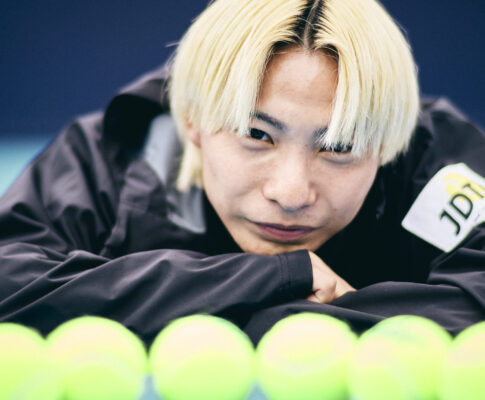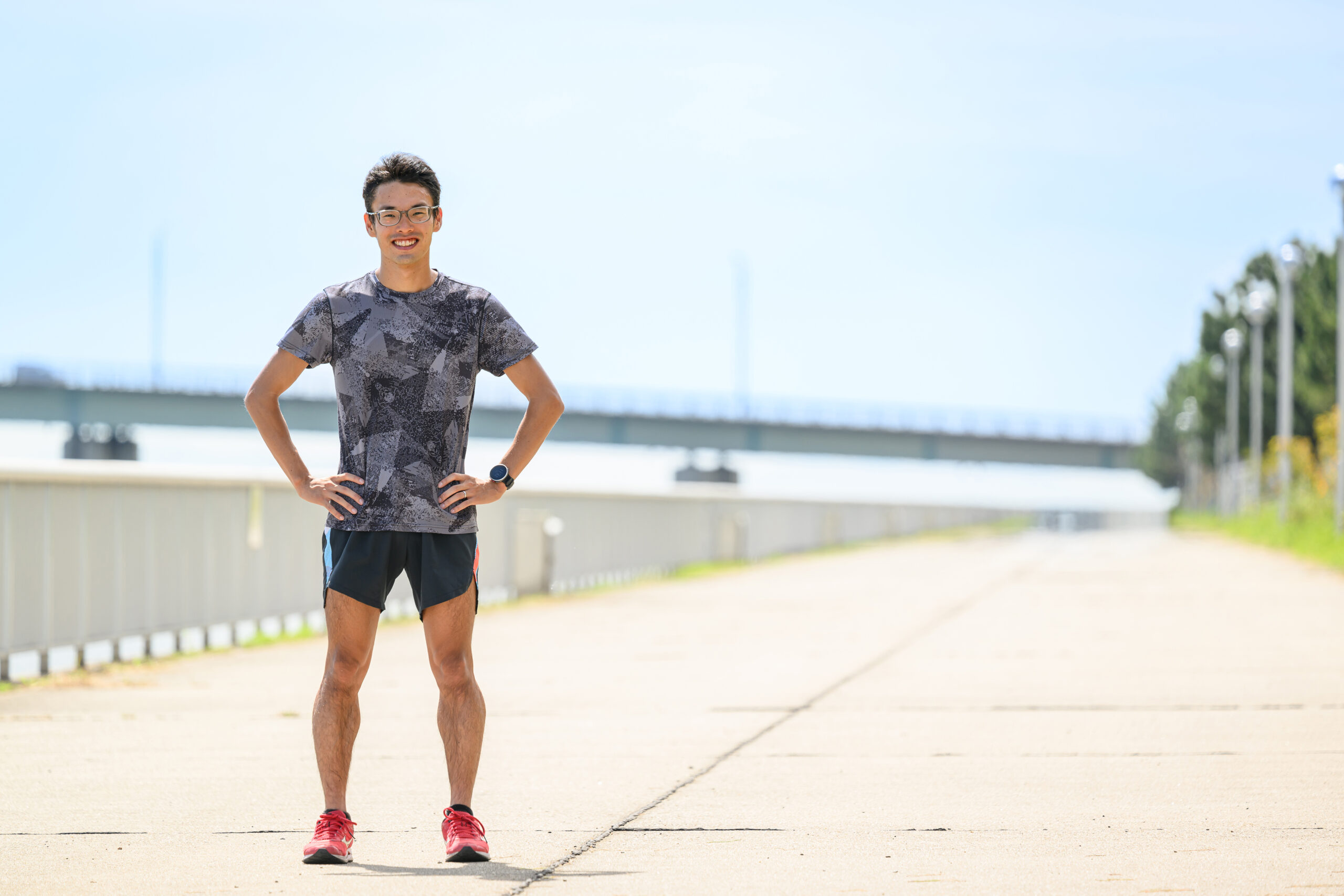
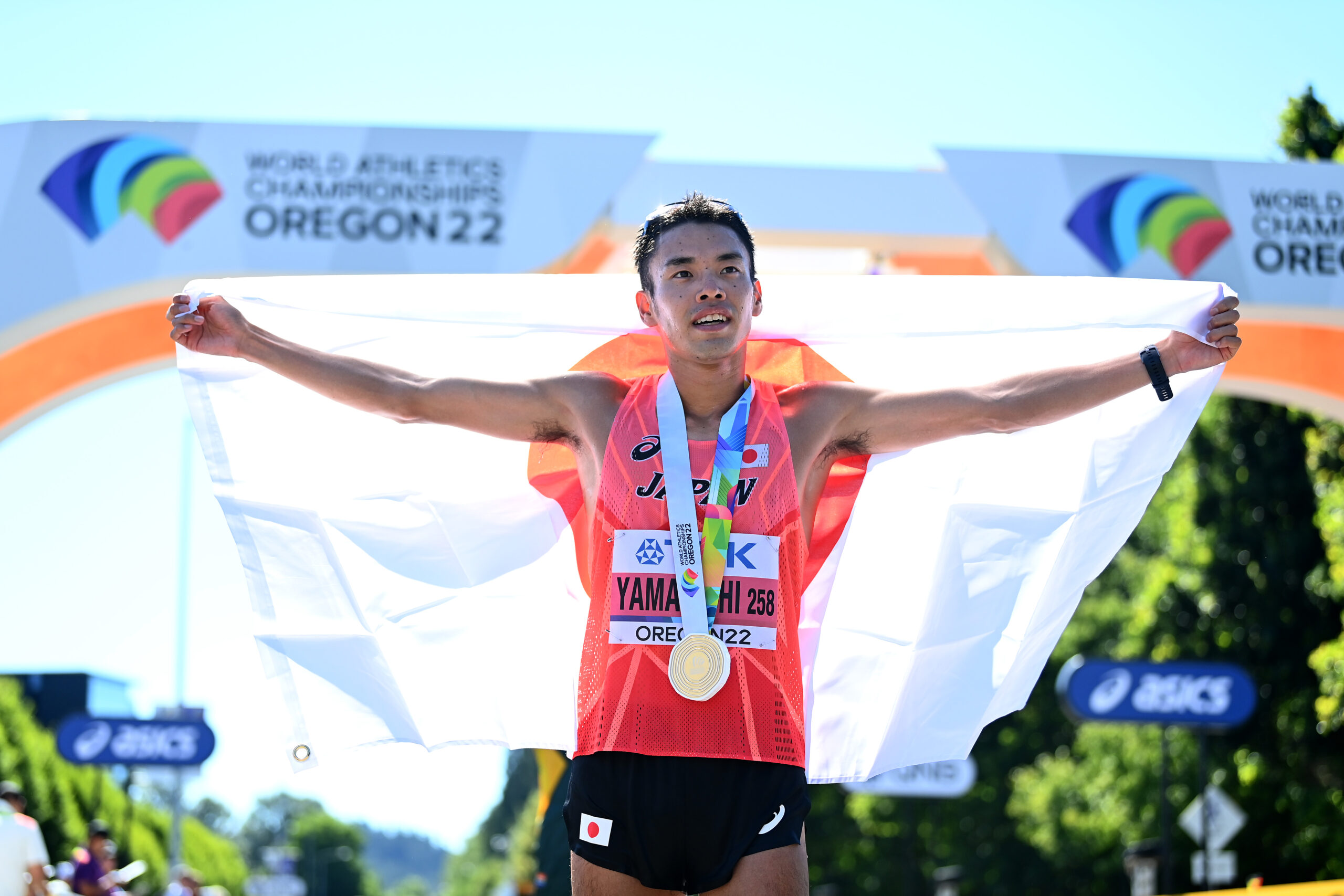
Toshikazu Yamanishi
Born in Kyoto in 1996. After graduating from Kyoto University, he joined Aichi Steel Corporation. He started race walking in high school and has achieved brilliant achievements such as winning the Inter High School Athletic Meeting and the Universiade Championships. He was becoming one of the world’s leading athletes of his generation. After entering the workforce, he competed in his first event, the World Athletics Championships Doha 2019, where he won the gold medal in the 20km race walk. At the following World Athletics Championships Oregon 22, he won his second consecutive gold medal. He also won a bronze medal at the Tokyo 2020 Olympic Games.
There are Opportunities in Race walking for Ordinary Athletes Like Me.
–Yamanishi-san, why did you take up track and field?
When I became a junior high school student, I decided to try some sports that I could do, and the one I could say I was good at was track and field. I enjoyed running and took practice reasonably seriously, but I never thought that I would become famous in track and field. I finished my three years in junior high school as an ordinary athlete, losing without even participating in the Kyoto prefectural championships. I continued to join the track and field club in high school.
–You first encountered race walking in high school. How did you encounter it?
When I was a junior high school student, there were no regional competitions for race walking leading to national championships in junior high school, and I think there were very few club activities at school. Most race walkers have encountered the sport during their high school years, when there were regional competitions leading to the national championships. I am one of them.
I started race walking for two reasons: I met people related to race walking, including a friend who was a race walker and an advisor who passionately coached. And there were not so many competitors in the event for race walking, so I had an ulterior motive that even an ordinary track and field athlete like me might have a chance. When I tried to imitate the movements of a race walker, it didn’t seem as bad as I thought, so I gave it a try.
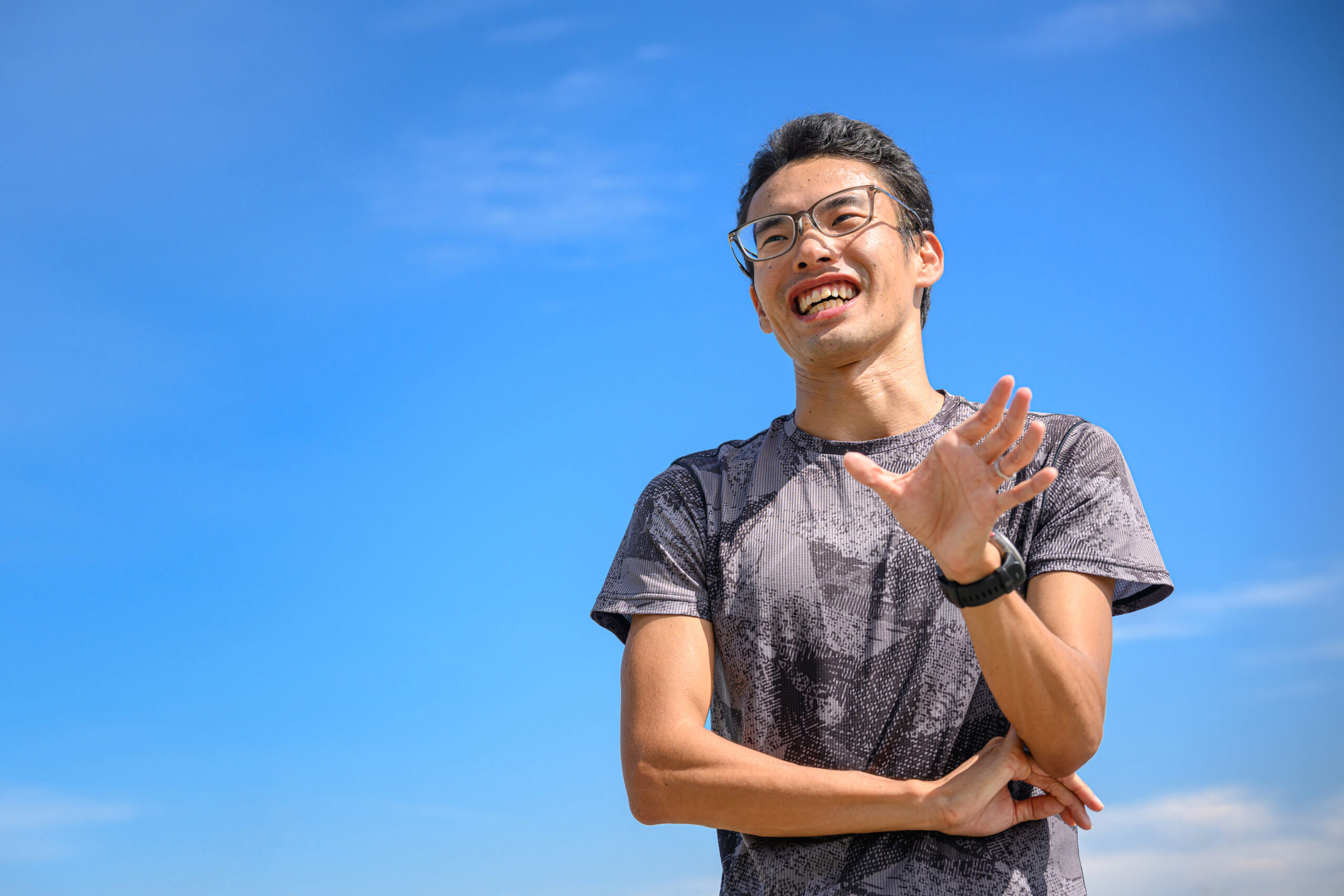
–What kind of practice did you do every day during your high school days?
Race walking is literally a walking race, and it is important to balance the two points of going fast and walking according to the rules. For example, after the foot lands on the ground, the knee must be straight, but if you are preoccupied with that rule, you will not be able to go fast. On the other hand, if you walk only for speed, your knees will bend and you will violate the rules, or your form will break down. While maintaining the balance between the two, we accumulate practice in order to create our own ideal race walking style.
One type of practice involves repetitive exercises called “drills”. There are about ten essentials of race walking movements, each of which is cut out and repeated, and finally all of them are done all together at once to build up one’s own movements.
— You quickly became stronger and won the Inter-High School Championships in third year of high school. You went on to the Faculty of Engineering at Kyoto University, but you were torn between devoting yourself to your studies and continuing with race walking.
I remember how happy I was to see the results of my three years of dedication. I was torn about what to do after that, but in my second year of high school, the Tokyo 2020 Olympics were decided, and I wanted to dream of winning a gold medal, so I continued running track and field at university.
However, to win a gold medal, it was not enough to set a goal of becoming the best university athlete in Japan in four years; I had to set a course for the future with a steeper gradient angle. I practiced hard, thinking that I would not be able to win a gold medal unless I changed everything, including the way I improved my form, the way I walked, and the quality, quantity, and intensity of my training.
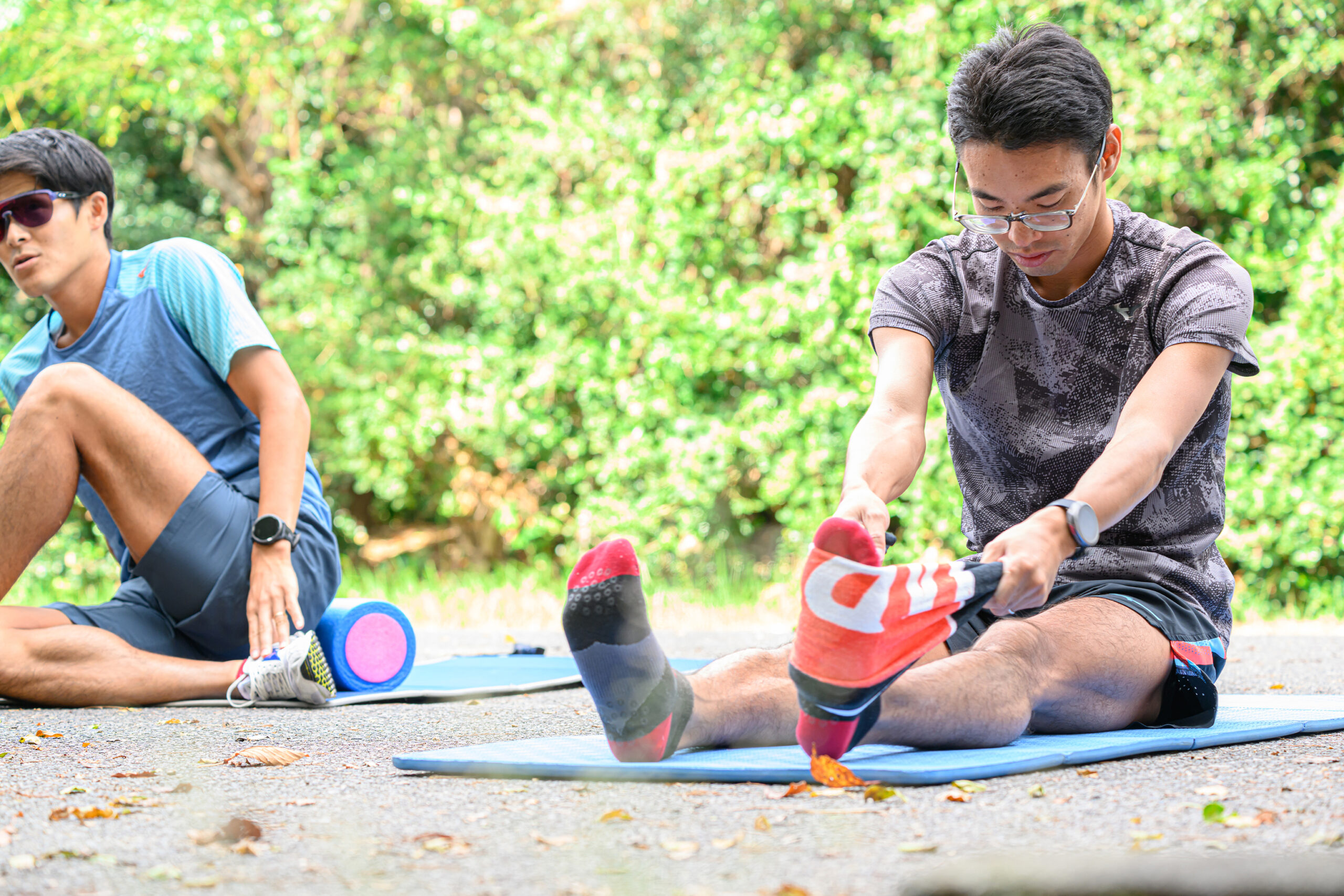
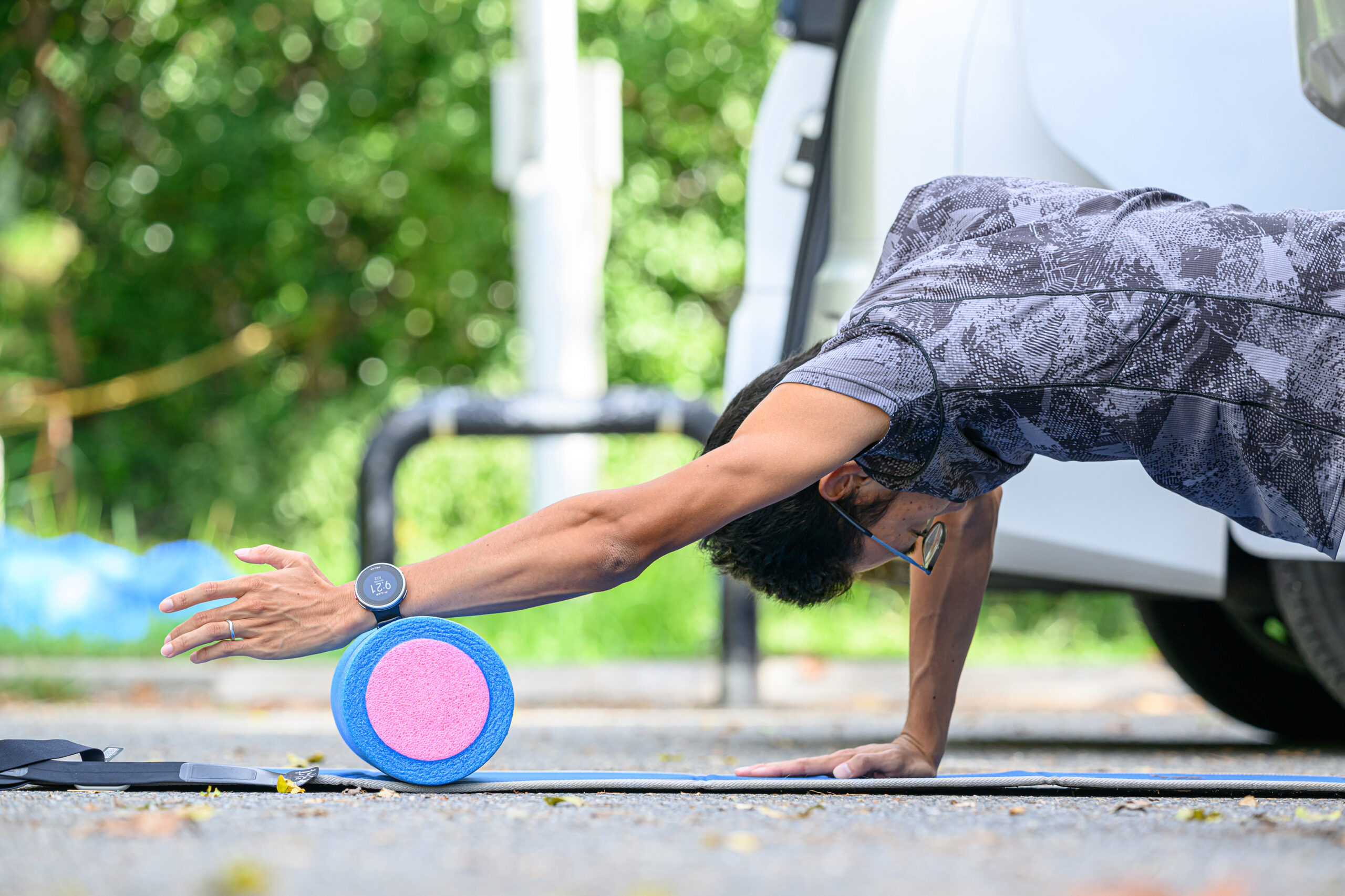
–And just as you had set your sights on, you became the first Japanese athlete to win a bronze medal at the Olympic Games in Tokyo 2020 Olympic Games!
I think that setting high goals paid off. However, my goal setting did not work out as expected at the World Championships Budapest 23 in August 2023.
I usually take part in 20 km race walk, but I thought that the challenge for the 35 km race walk would definitely be a good experience for my race walking career, so I participated in the 59th All-Japan 35 km race walking in Takahata in October 2022. While I gained a lot of experience and awareness, it is also true that I was unable to practice carefully for Budapest, when I should have been preparing for Budapest, and so I was at a standstill. Due to a combination of various other factors, my preparation for Budapest was slower than expected. My conclusion is that I participated in Budapest without a solid foundation for walking, which led to my 24th place finish.
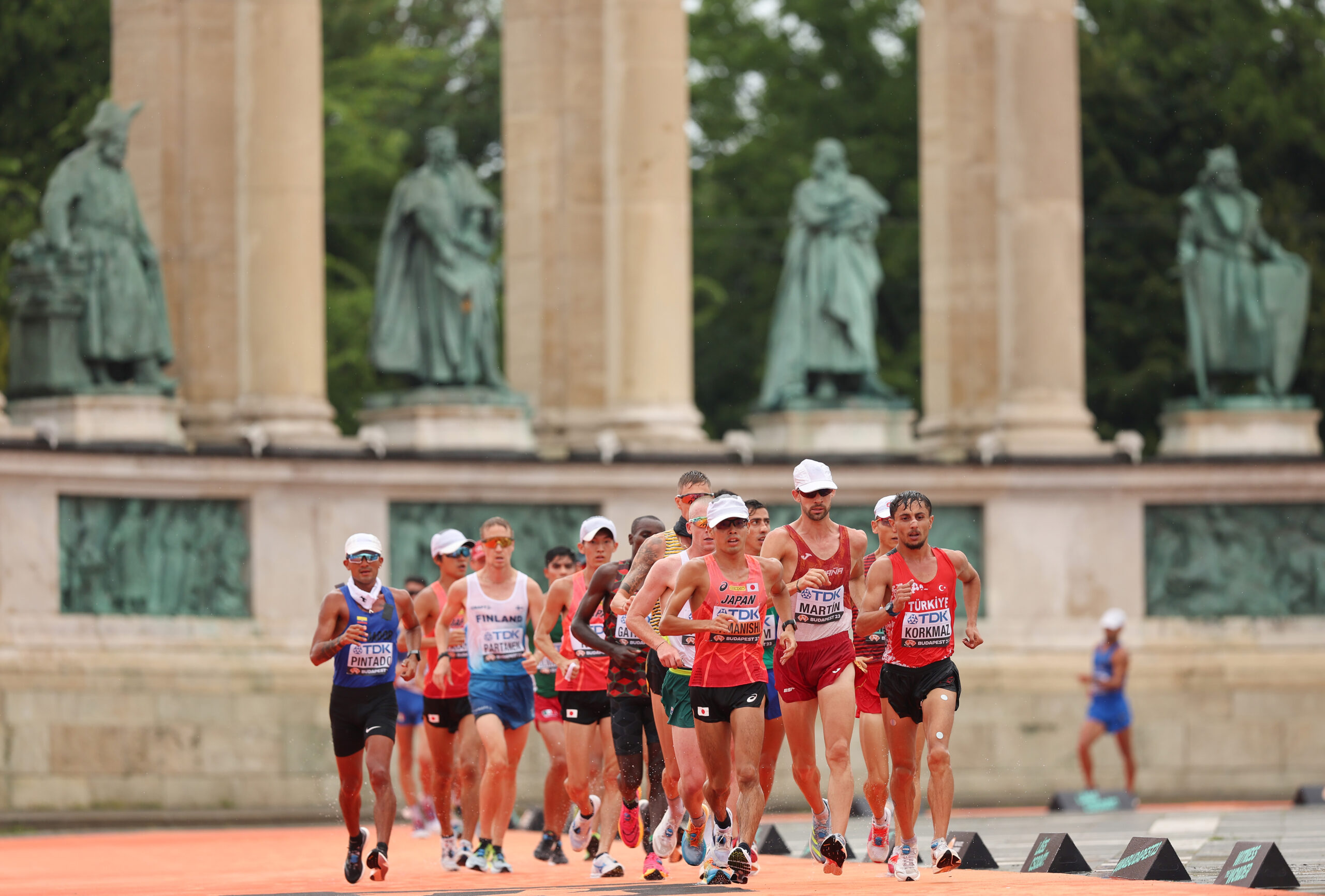
–At the “TOKYO FORWARD 2025 Symposium” held in September 2023, when asked about your thoughts on the World Athletics Championships Tokyo 25, you replied, “Pursuing the ideal”. What is Yamanishi-san’s “ideal”?
I have a strong desire to win in Tokyo because I couldn’t win in Budapest. It will be held in Japan so I am looking forward to having many people watching our race as I prepare for the Games.
My ideal was to win a medal at the Tokyo 2020 Olympics. After that was realized, I was able to set my goals freely, so it would be too cool to say that I am “looking for my own race walk,” but that is what I consider to be my current ideal. My ideal and goal is to create my style of race walk that I am satisfied with and to give my own answer to it.
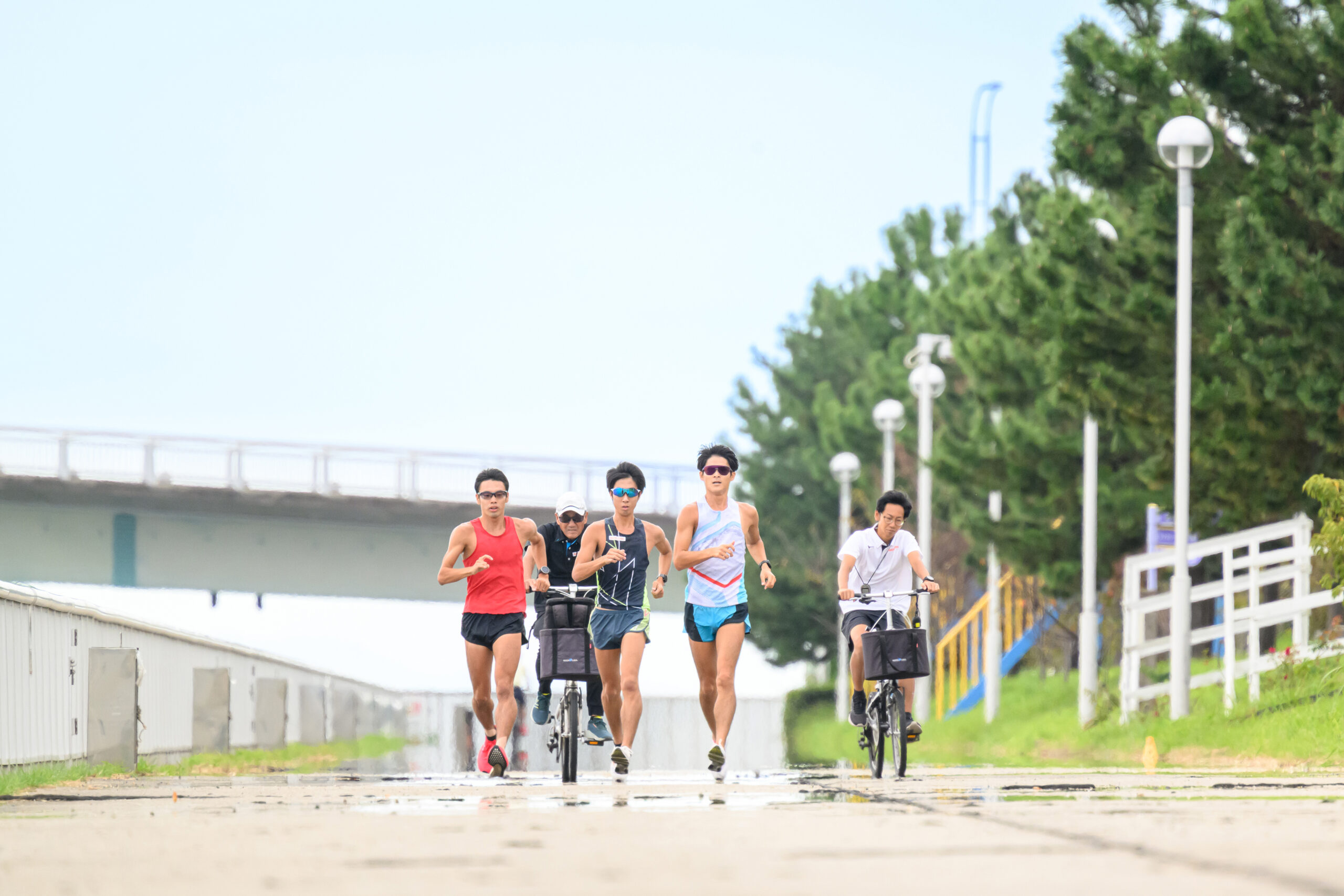
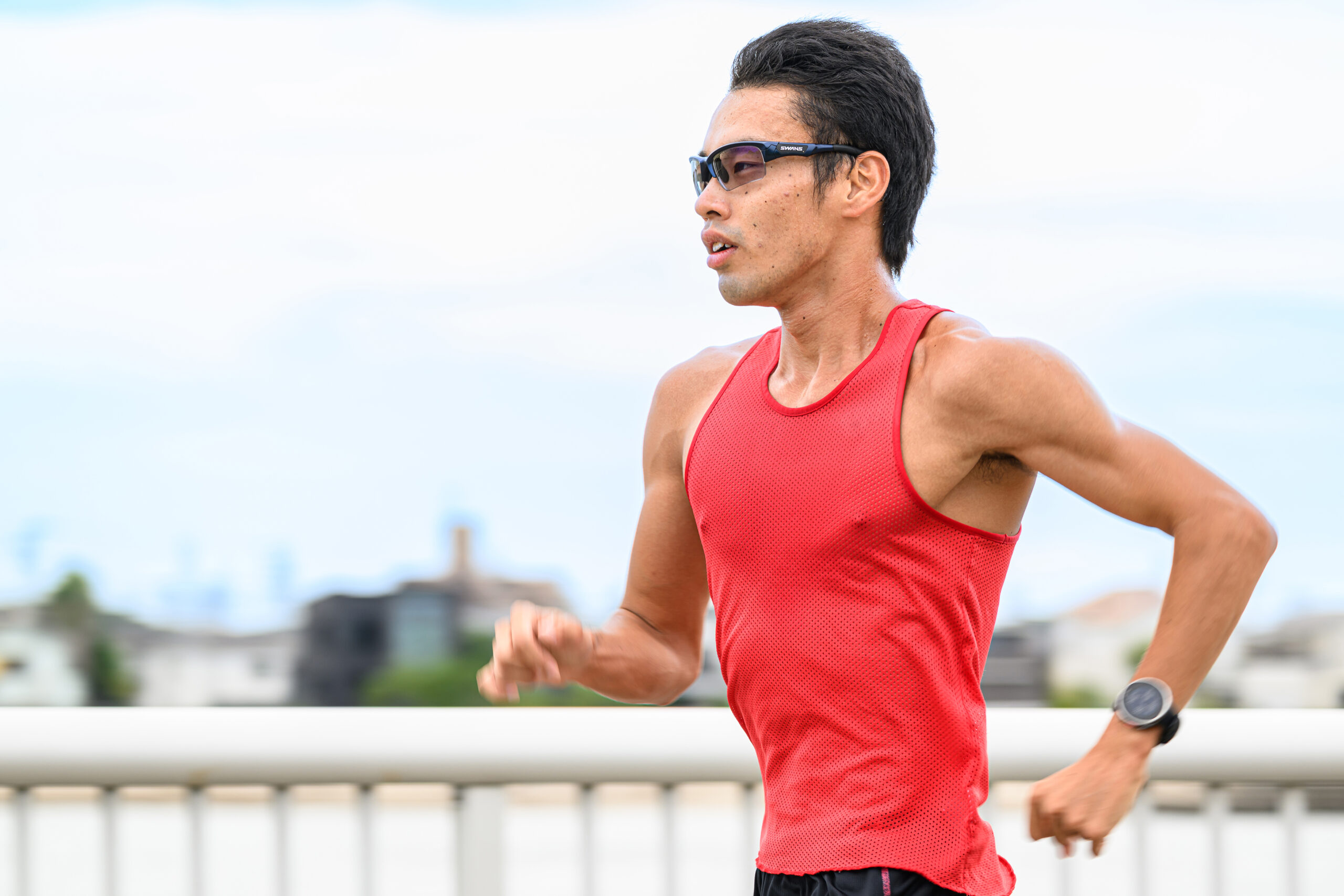
The Daily Efforts for Elementary School’s Marathon Event Unveiled a Joy for Sports.
–I would like to ask you not only as an athlete, but also as an individual, Yamanishi-san. What sports did you play as a child before you got into race walking?
I took gymnastics classes in kindergarten, soccer in the first grade, and swimming in about the third grade of elementary school. I took swimming lessons for about two years, but other than that I didn’t last long, and I didn’t think I was good at sports. In the third grade of elementary school, I participated in a marathon held at school and placed faster counting from the bottom. My teacher gave me a card like “Sugoroku” that gave me marks for running, and I started running because I wanted to get stamps and advance that card. It was a short period of time, but as a result of my daily efforts, I was able to finish in the top 20 in the marathon in the fourth grade. It made me happy to think, “There is a sport I can do, too”.
However, in the fifth and sixth grades, even after a few weeks of practice, I could not beat my classmates who usually trained for soccer and other sports, and I remember that I dropped down the rankings. However, I did not dislike long-distance running, so I joined the track and field club at junior high school and began running long distances.
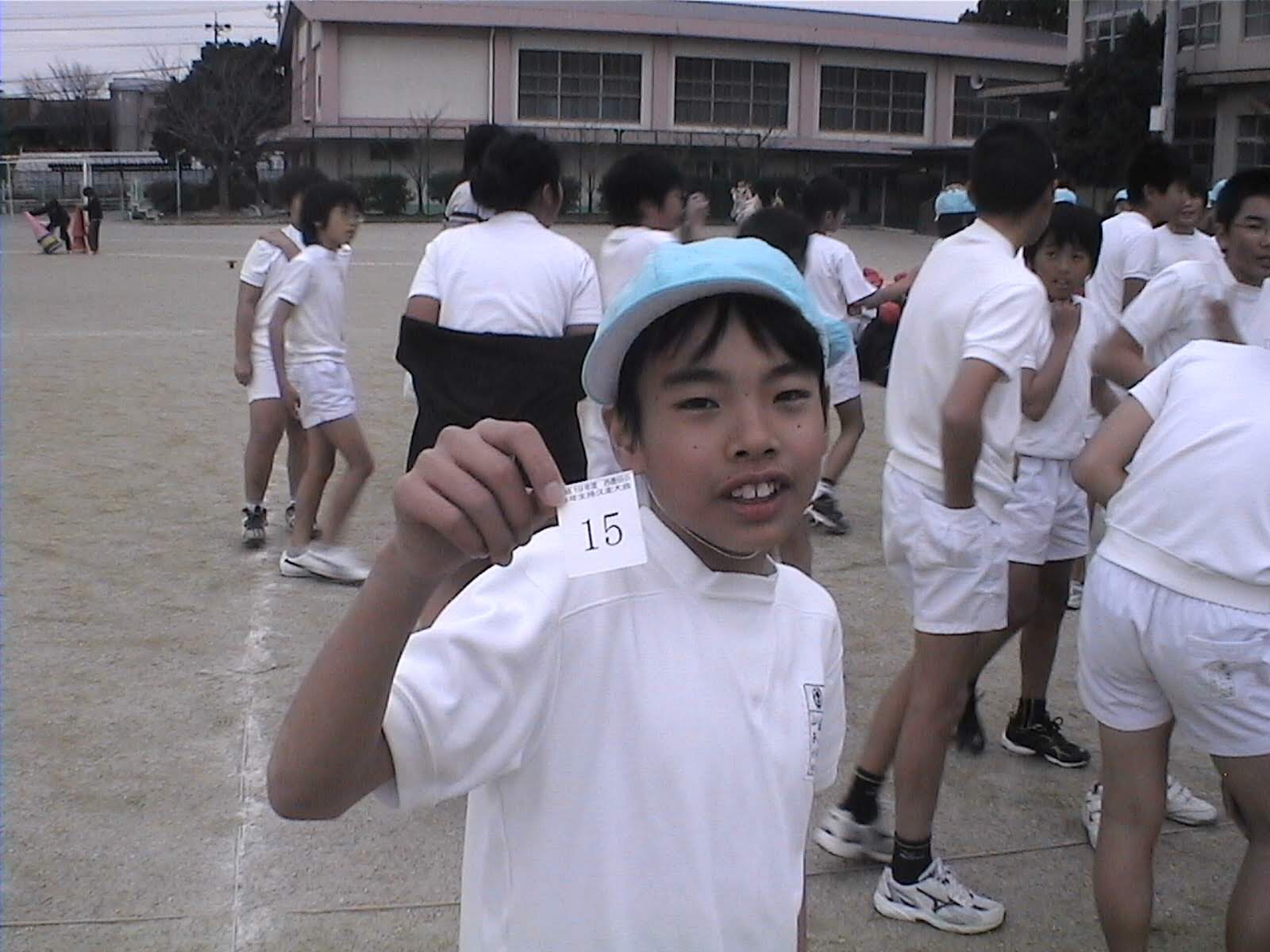
–What do you do most of the time outside of athletics?
As I do now, I have loved to read books since I was a child. At the time, my favorite was Edogawa Rampo’s “The Phantom with Twenty Faces”! I remember reading it with peace of mind because it was a story in which no one died. Recently, I read “Nettai” by Tomihiko Morimi.
However, I originally don’t like big changes, so I tend to read only books by the same authors if I let myself go. In order to resist my tendency to become rigid, I have recently been trying to read a variety of authors. Besides novels, I was recently inspired by Shogi player Yoshiharu Habu. There is much to be learned from the philosophy of a people whose job is to win.
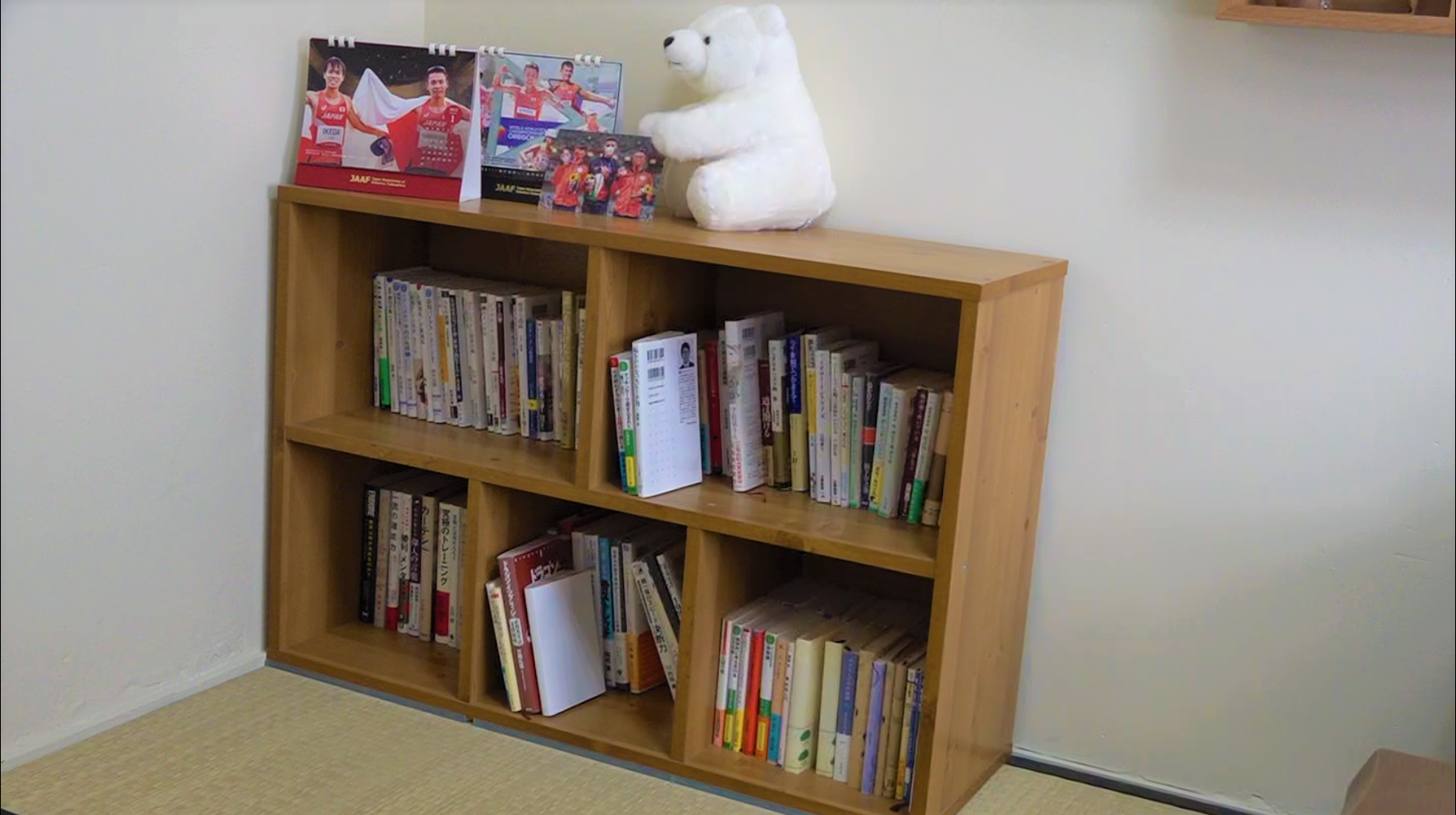
–What do you like to do outside of books?
I like to spend time relaxing in a daze, doing patterned movements and not thinking about anything else in my head. For example, when I am spinning a Rubik’s Cube that I have learned how to do (laughs). I also like origami which is like making and assembling I like to spend time relaxing in a daze, doing patterned movements and not thinking about anything else in my head. For example, when I am spinning a Rubik’s Cube that I have learned how to do (laughs). I also like origami which is like making and assembling sixty or more small pieces of paper to a decorative paper ball. I like the time when I just keep doing the same work, the same patterned work.
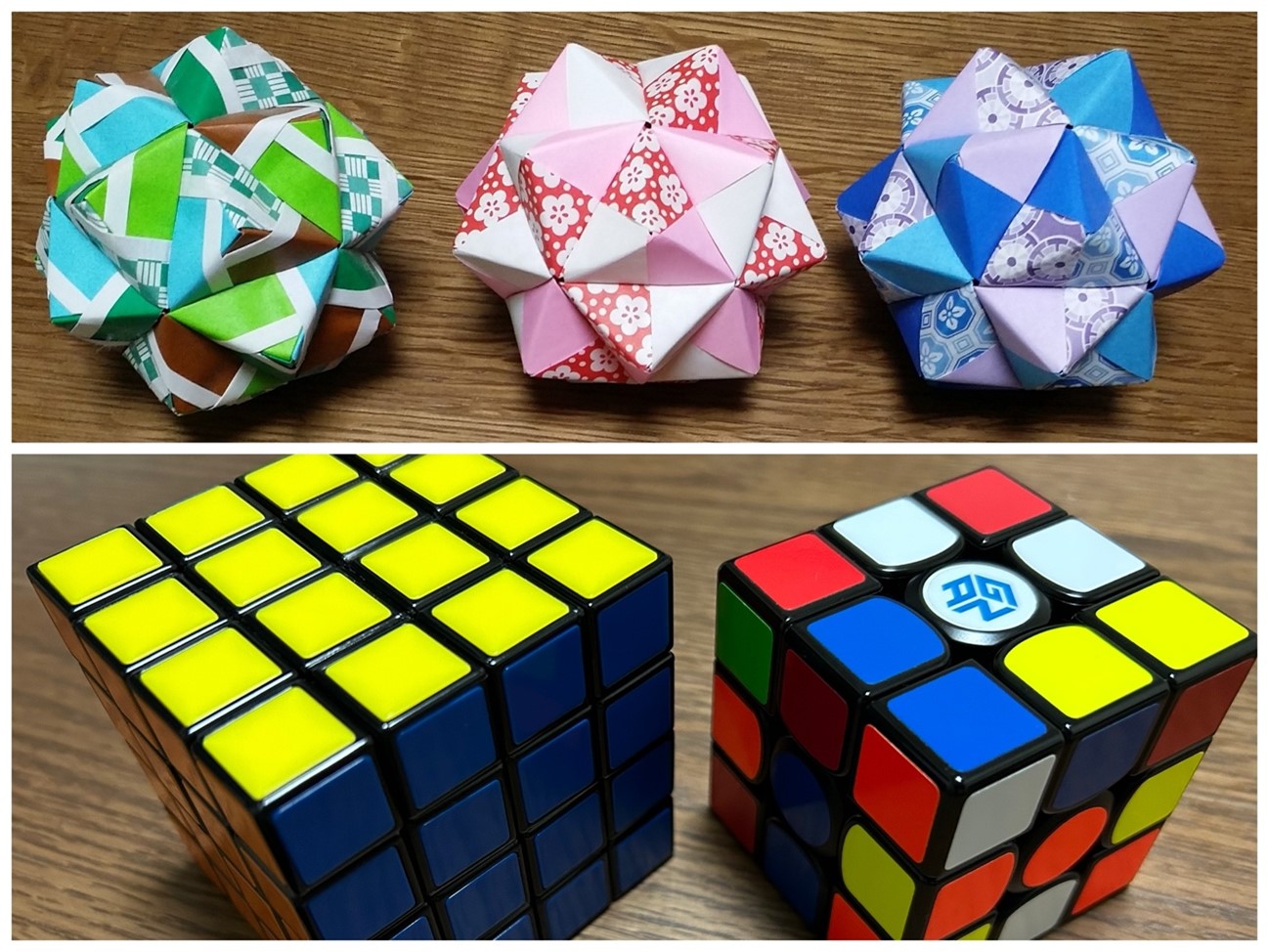
Bottom: A Rubik’s Cube, which he says he can do without thinking. (Photo from Yamanishi-san)
Even If He Won or Got a Medal, the Pressure Remains. His Strategies for Coping.
–What do you do on your days off?
When I was single, I often left home and came back without doing anything. I would go for aimless walks around town, or go into a department store and come out without buying anything. I would go out thinking, “I hope there is something ,” but I would come home without anything (laughs). That kind of thing happened a lot before the tournament. Perhaps to escape the pressure before the competition, I would try to do or think about something else besides race walking, but in the end I would not be able to do anything.
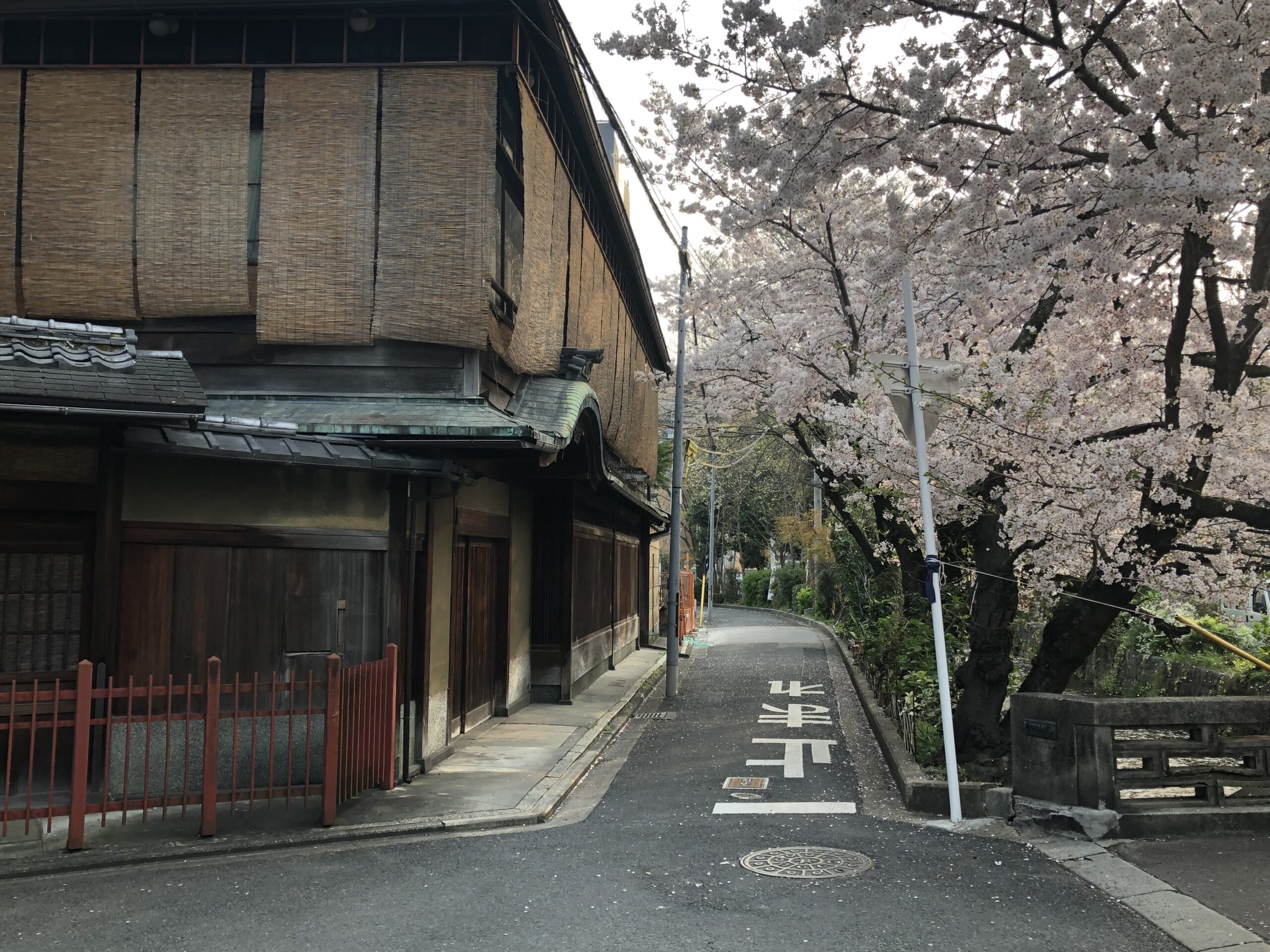
–I guess that there is no way to escape the pressure that is looming. Is there anything you do as a routine before a match?
Before lining up at the starting line, I look up at the sky. I get so nervous at the start that I tend to focus too much on the race and my inner self, so I look out at the big sky and say to myself, “I’m nervous as hell, but you’re not as big as you think. I can get back to my small self, and I feel much better. (Laughs)
I also eat rice before a match. When I go abroad, I bring a packet of white rice and sekihan (red rice), which can be turned into rice by simply pouring hot water over it, for a few days. I also have freeze-dried miso soup. Walking races require sustained physical activity for extended periods, and since I can’t sustain my energy levels with bread or pasta, I opt for rice before the race.
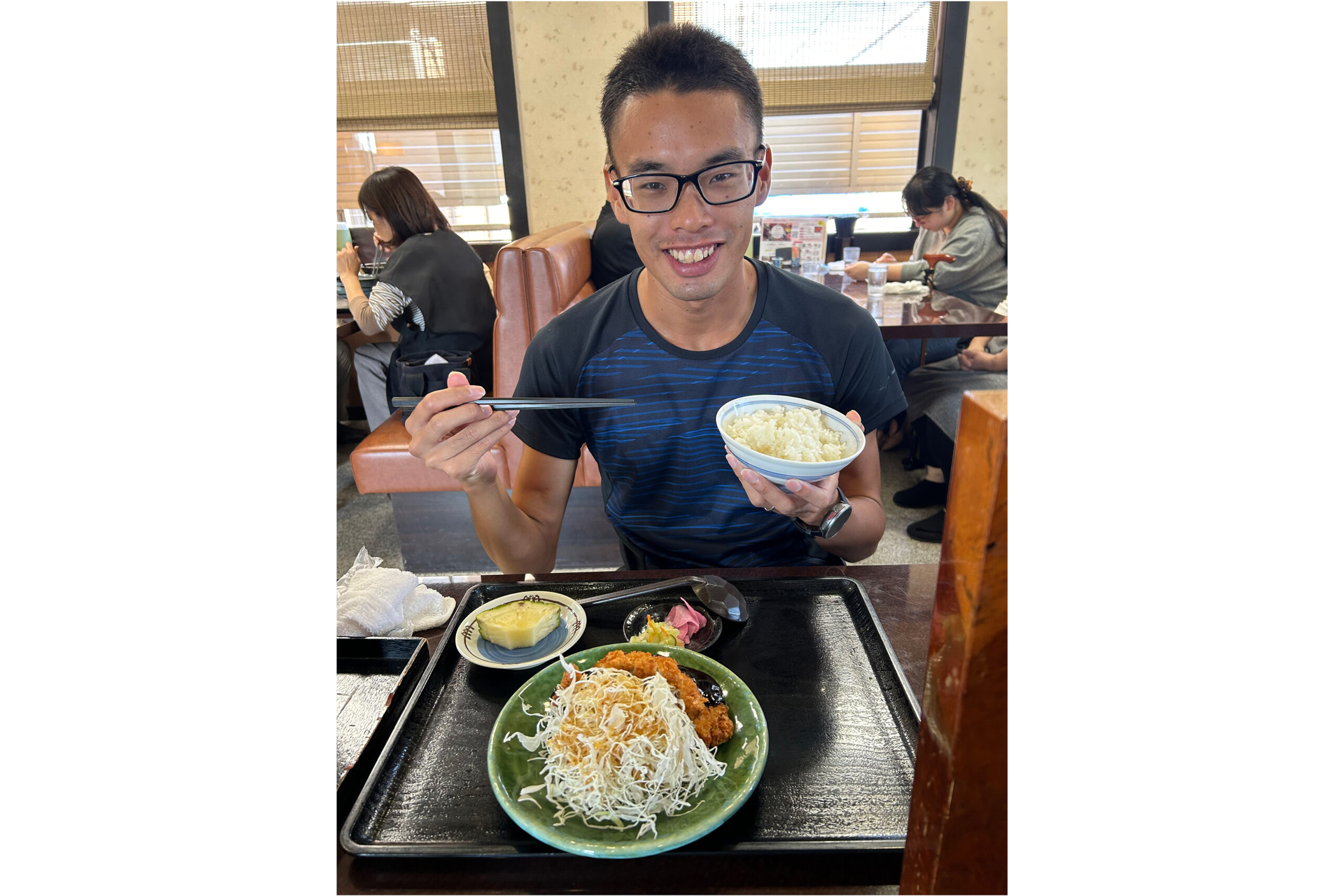
–Finally, I assume that some of you are reading this article and are going to watch a race walking for the first time. How can we enjoy race walking?
There are many different forms of walking, such as beautiful forms, floppy but surprisingly fast forms, and running-like forms, and it is fun to watch and compare them. If you want to better understand the differences in form, I recommend that you try race walking. Feel free to do it your own way in a park or on a safe path. It may give you a clue to understand the movement of race walking.
The 20 km race walk is all about how to stay with the lead pack and keep your energy up for the last, but in the 35 km race walk, even if the players fall out of the lead pack, they can catch up and finish in third place or so. You will be able to enjoy the 20 km and 35 km races from different perspectives.
X(旧・Twitter)@Yamanishi_Toshi
Instagram:yamanishi0
photographs by Yusuke Abe
text by Kentaro Matsui
Co-produced with the Local Organising Committee of World Athletics Championships Tokyo 25.
